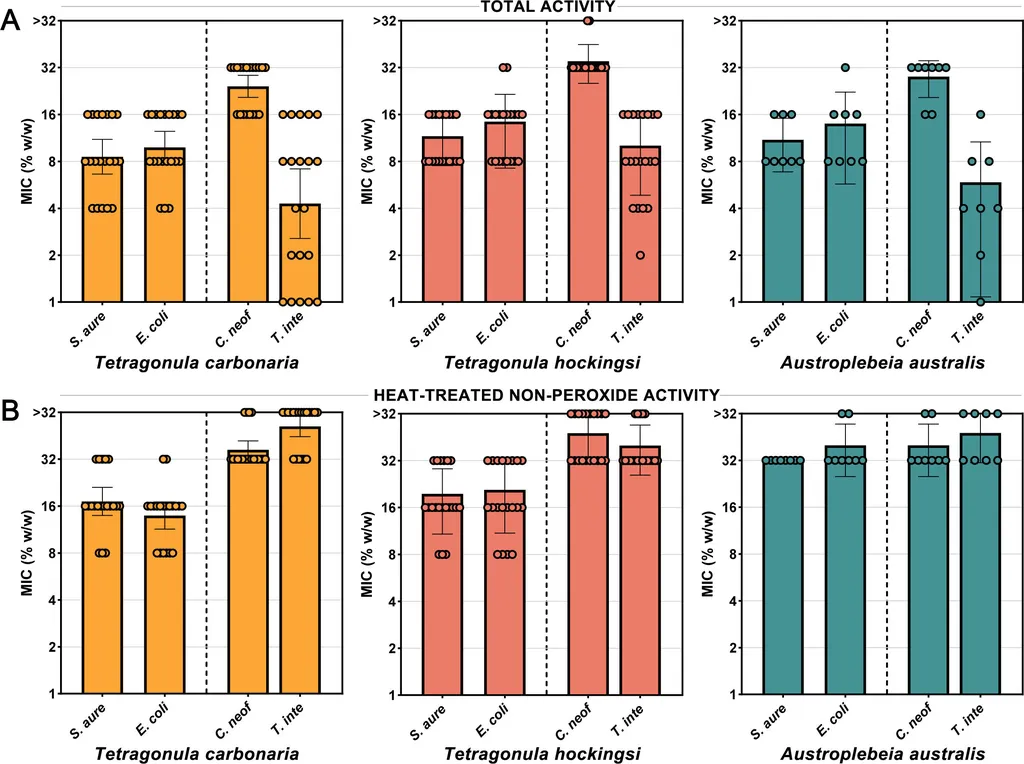In the relentless battle against antimicrobial resistance (AMR), a novel ally has emerged from the humble world of bees. A recent study published in the *Journal of Functional Foods* (also known as *Journal of Functional Foods*) has shed light on the untapped potential of honey bee and stingless bee products in combating the global crisis of AMR. The research, led by Wen Jie Ng from the Department of Allied Health Sciences at Universiti Tunku Abdul Rahman in Malaysia, offers a fresh perspective on how these natural products could revolutionize the way we tackle antibiotic-resistant infections.
AMR is a looming threat, driven by the overuse and misuse of antibiotics, leading to a surge in healthcare-associated infections worldwide. Traditional antibiotics are becoming less effective, and the development of new drugs is lagging. This is where bee-derived products step in, offering a promising alternative or adjunctive therapy. “Quorum sensing (QS) inhibitors and biofilm formation blockers are emerging as novel therapeutic approaches,” explains Ng. “Bee-derived products have demonstrated robust antimicrobial properties, particularly in combating antibiotic-resistant bacteria.”
While the antimicrobial activity of honey bee products is well-documented, the potential of stingless bee products remains largely unexplored. This comprehensive review provides a comparative update on the potential implementation of both honey bee and stingless bee products in mitigating AMR. By targeting virulence factors and pathogenicity mechanisms such as biofilms, these natural products could offer valuable insights into alternative therapies.
The implications of this research are vast, particularly for the energy sector. Healthcare-associated infections can lead to significant economic losses, including increased healthcare costs and reduced productivity. By providing a natural and effective means of combating AMR, bee-derived products could help mitigate these losses and promote a healthier workforce. “This research opens up new avenues for the development of natural antimicrobial agents,” says Ng. “It’s a step towards a more sustainable and effective approach to combating AMR.”
The study also highlights the need for further research into stingless bee products. As Ng notes, “This is an underexplored field with great potential.” By investing in this area, we could unlock even more powerful tools in the fight against AMR. The publication of this research in the *Journal of Functional Foods* underscores its significance and relevance to the scientific community.
In conclusion, the research led by Wen Jie Ng offers a compelling case for the use of bee-derived products in combating AMR. By targeting virulence factors and biofilm formation, these natural products could provide a much-needed boost to our antimicrobial arsenal. As we continue to grapple with the challenges of AMR, this research offers a beacon of hope and a path forward. The energy sector, in particular, stands to benefit from these findings, as a healthier workforce translates to increased productivity and economic growth. The future of AMR treatment may well lie in the buzzing world of bees.

